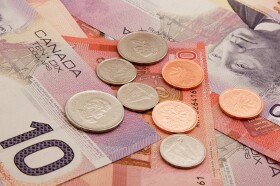The Canadian dollar is rallying to finish the trading week, buoyed by economic growth beating market expectations and rising energy prices. Despite the multiple bearish forecasts regarding the loonieâs future, the currency recorded an impressive 2% to 3% gain against its most-traded rivals in the first quarter of 2019.
According to Statistics Canada, the Canadian economy expanded 0.3% in January, which is more than the 0.1% growth economists had penciled in. Most analysts were not expecting much, especially after Canada hardly grew in the fourth quarter of 2018 and the myriad of bearish reports pertaining to the economy.
Economic growth occurred in 18 of the 20 industrial sectors; the goods-producing industries rose 0.6% and the services-producing industries jumped 0.2%. Manufacturing and construction led the way with 1.5% and 1.9% growth, respectively.
In other data, the producer price index (PPI) rose 0.3% in February, higher than the median estimate of 0%. Investors will not have much data to look forward to until the end of next week, when all the labor numbers â jobs, wages, and participation rate â are published.
Energy prices are further lifting the loonie at the end of the trading week. May West Texas Intermediate (WTI) crude oil futures soared $0.81, or 1.37%, to $60.11 per barrel on the New York Mercantile Exchange. May natural gas futures slipped $0.027, or 1.00%, to $2.685 per million British thermal units (btu).
Crude remains one of Canadaâs biggest exports, and any significant movement in energy prices would affect the anemic economy.
The USD/CAD currency pair fell 0.63% to 1.3357, from an opening of 1.3439, at 14:26 GMT on Friday. The EUR/CAD tumbled 0.49% to 1.5010, from an opening of 1.5075. The GBP/CAD slid 0.48% to 1.7442, from an opening of 1.7526.
If you have any questions, comments, or opinions regarding the Canadian Dollar, feel free to post them using the commentary form below.
Canadian Dollar Rallies on GDP, Energy Prices
